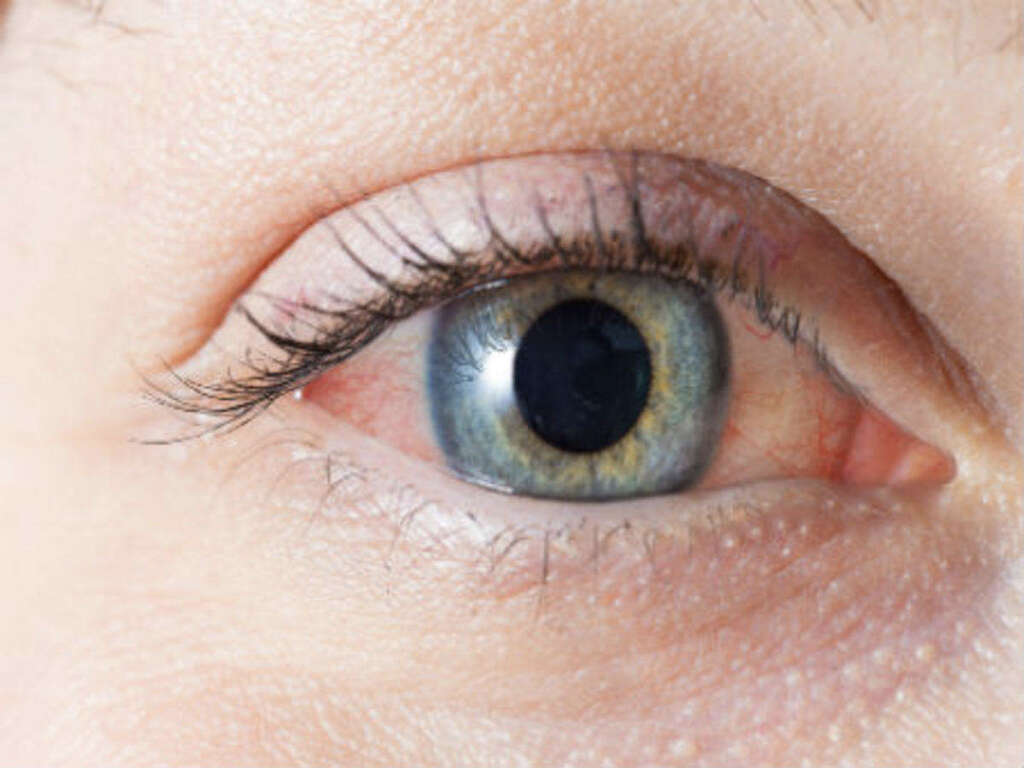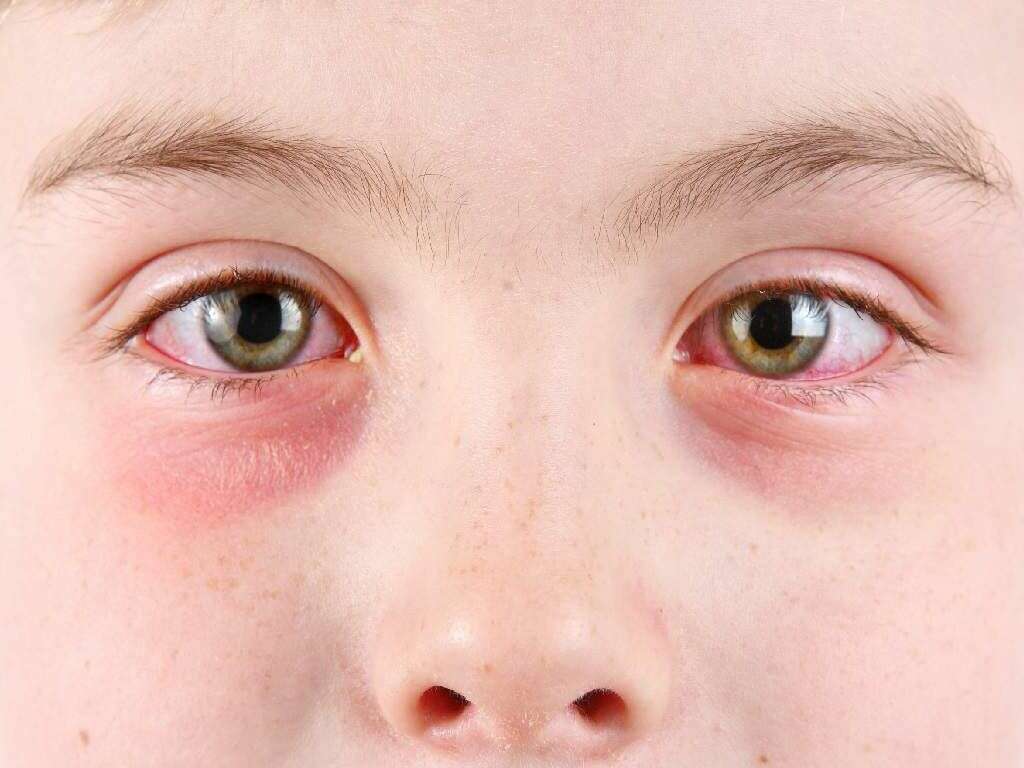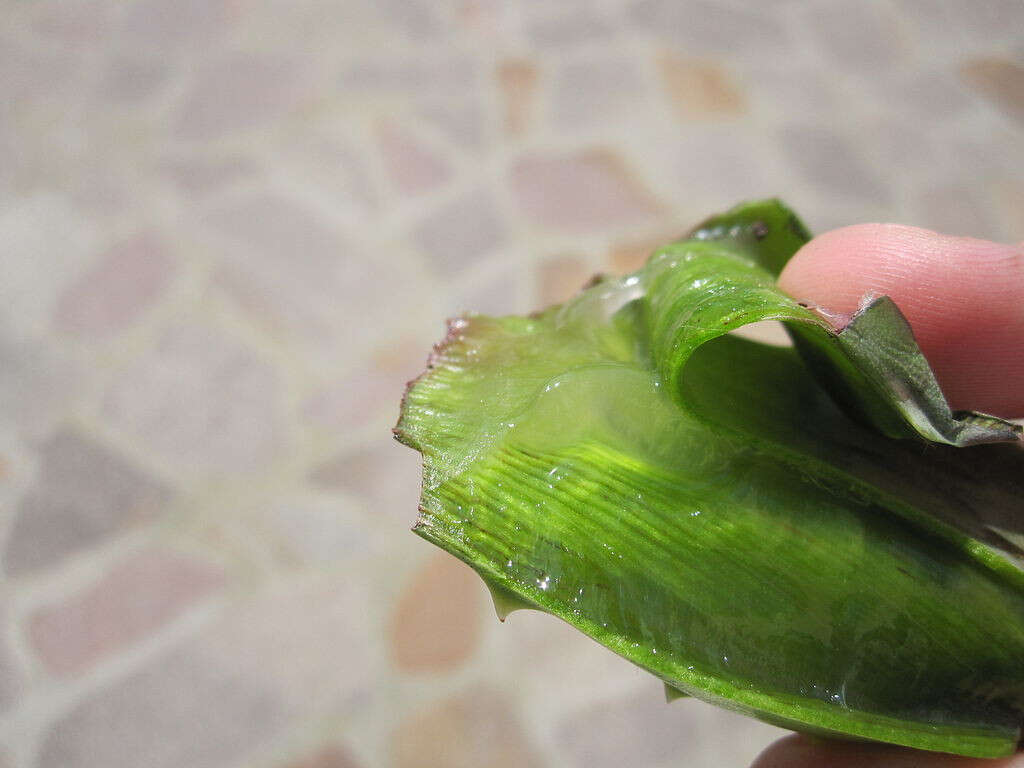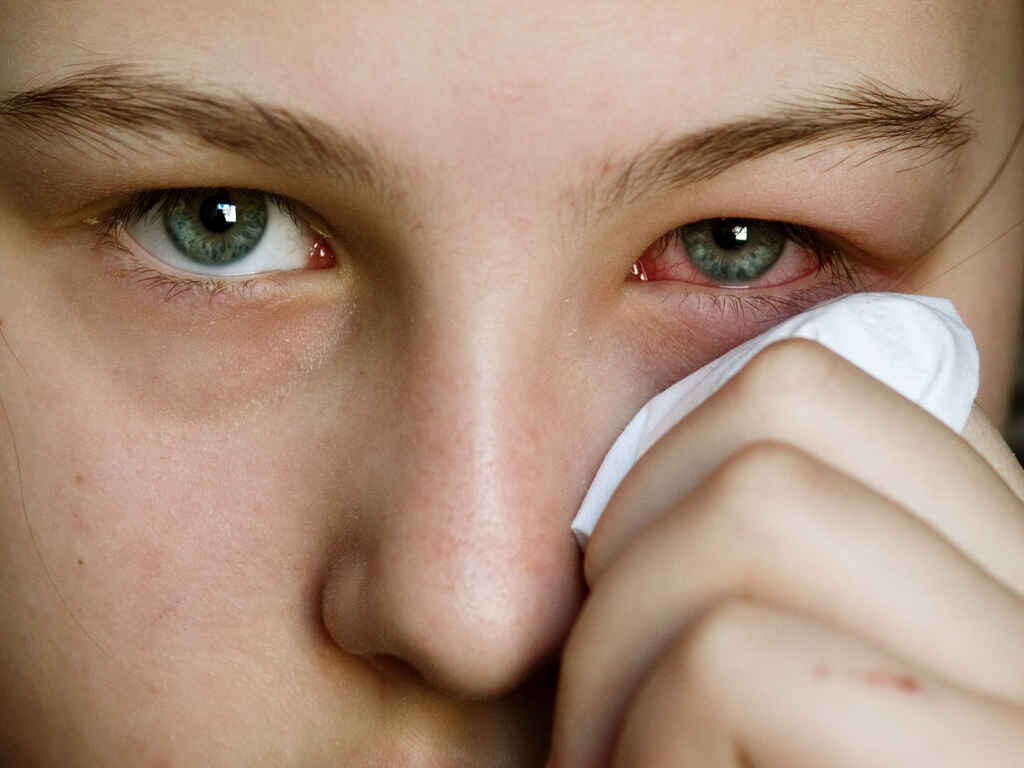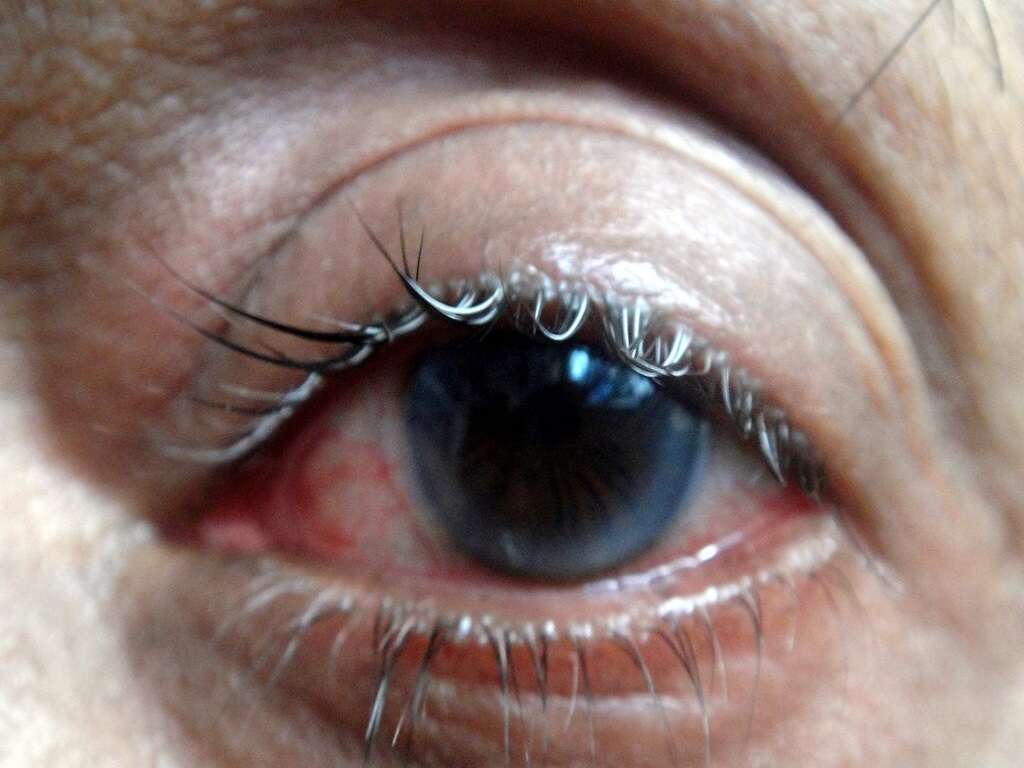What Causes Pink Eye?
 Article Sources
Article Sources
- 1. Contact lenses and pink eye. (2020, November 11). Retrieved November 18, 2020, from https://www.allaboutvision.com/conditions/pink-eye-contacts/
- 2. Miles, K. (n.d.). Blocked tear ducts in babies. Retrieved November 18, 2020, from https://www.babycenter.com/0_blocked-tear-ducts-in-babies_10403185.bc
- 3. Pink eye (conjunctivitis). (2020, June 16). Retrieved November 18, 2020, from https://www.mayoclinic.org/diseases-conditions/pink-eye/symptoms-causes/syc-20376355
- 4. Pollen allergy: Types, treatments, and home remedies. (n.d.). Retrieved November 18, 2020, from https://www.medicalnewstoday.com/articles/322256
- 5. Schroeder, M. (2020, January 21). What's the Difference Between Viral and Bacterial Pinkeye? Retrieved November 18, 2020, from https://health.usnews.com/conditions/eye-disease/conjunctivitis/articles/viral-vs-bacterial-conjunctivitis
Pink eye, or conjunctivitis, results from inflammation of the conjunctiva of the eye, which is a thin, clear membrane that covers the sclera (the white part of the eye). The pink appearance of the eye occurs as the blood vessels expand in response to the irritation.
There are several different common causes of pink eye, which can be categorized into viral, bacterial, and allergic conjunctivitis3Pink eye (conjunctivitis). (2020, June 16). Retrieved November 18, 2020, from https://www.mayoclinic.org/diseases-conditions/pink-eye/symptoms-causes/syc-20376355. The source of the condition determines what symptoms the individual experiences, how contagious it is, and what treatment is required.

1. Viruses
Pink eye can sometimes be a symptom of other viruses, which can be spread by direct contact from an infected surface, such as a contaminated hand touching the eye. Symptoms can last a few days to a couple of weeks and often go away on their own without medical intervention.
There are several different types of viruses that can cause pink eye, such as the common cold. Adenovirus is the most common culprit. COVID-19 can also cause eye inflammation in 1% to 3% of people. Herpes simplex virus and varicella-zoster virus are others.
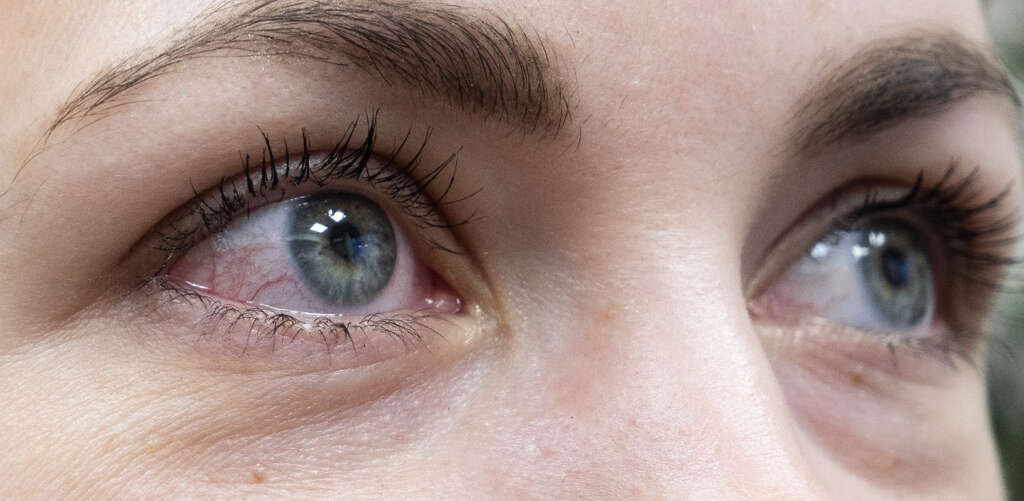
2. Bacteria
Bacterial conjunctivitis is caused by bacteria in the eye rather than an infectious virus. The individual may not experience any other cold-like symptoms, and there is often more discharge and crust that comes from the eye that is yellow or green. The eye may be a darker red as well.
While pink eye caused by a virus is often in both eyes, bacterial infections may only affect one eye (5). However, the bacteria can spread from one eye to the other. Since harmful bacteria such as staphylococcus are often at play, medical intervention may be needed to control the infection. Treatment includes oral antibiotics or medicated eye drops.
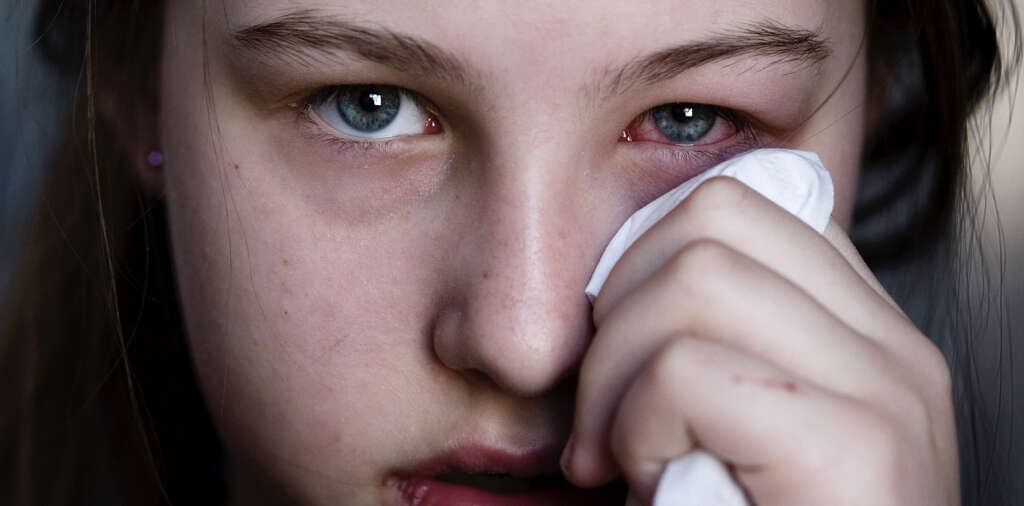
3. Irritants
Exposure to common irritants, such as smoke or dust, can cause an allergic reaction or inflammation in some people that lead to pink eye. Other symptoms may include an itching or burning feeling accompanied by watery eyes.
Smoke outdoors from a campfire or a wildfire, cigarette smoke, and car fumes are all common culprits of this type of pink eye. High winds kicking dust into the eyes and chlorine entering the eyes while in a swimming pool can also cause irritation. Wearing swim goggles or close-fitting sunglasses when outside in windy conditions can protect the eyes from further damage.
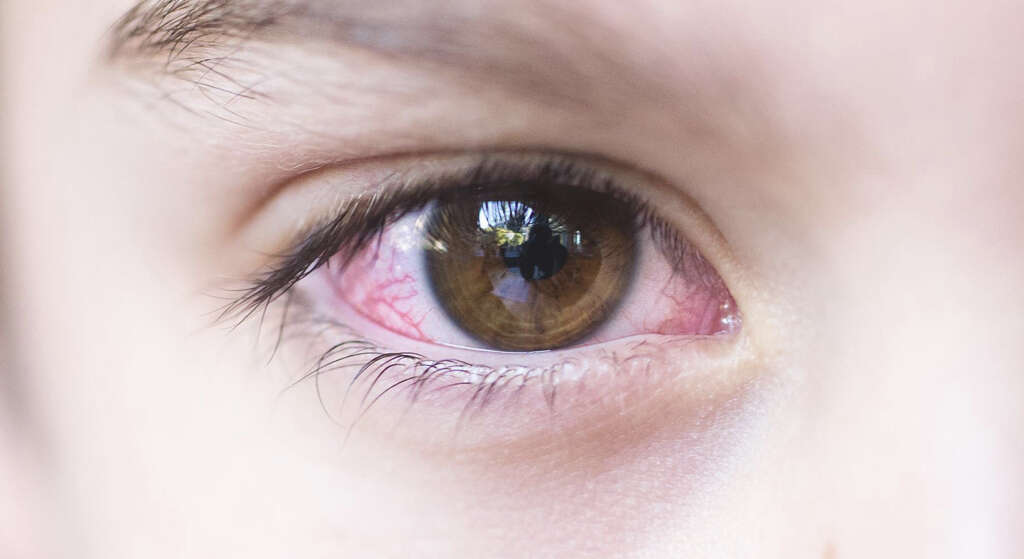
4. Chemical Splash
Many people have experienced pink eye from a chemical splash at least once in their lives. Accidentally getting shampoo or conditioner in the eyes while showering is an example of this. The type and quantity of the chemical that enters the eye can affect the severity of the condition.
While the irritation caused by common items such as shampoo may only cause temporary symptoms, harsher chemicals can cause a more serious eye injury. Lab technicians or chemists who work with harmful mixtures must wear safety goggles to glasses to help prevent this type of pink eye. If an accident does occur, the eye should be flushed immediately.

5. Contact Lenses
Regular contact lens wearers may experience pink eye more often than someone who wears only eyeglasses or does not need vision correction. One reason for this is that contact lenses may become infected with bacteria or viruses if not properly maintained.
Some people who wear contact lenses, specifically soft lenses, may experience giant papillary conjunctivitis. This is caused by continuous irritation of the eyelids, which can be worsened by any dirt that gets into the lens. Periodically wearing eyeglasses or switching to rigid gas-permeable can help relieve GPC.1Contact lenses and pink eye. (2020, November 11). Retrieved November 18, 2020, from https://www.allaboutvision.com/conditions/pink-eye-contacts/
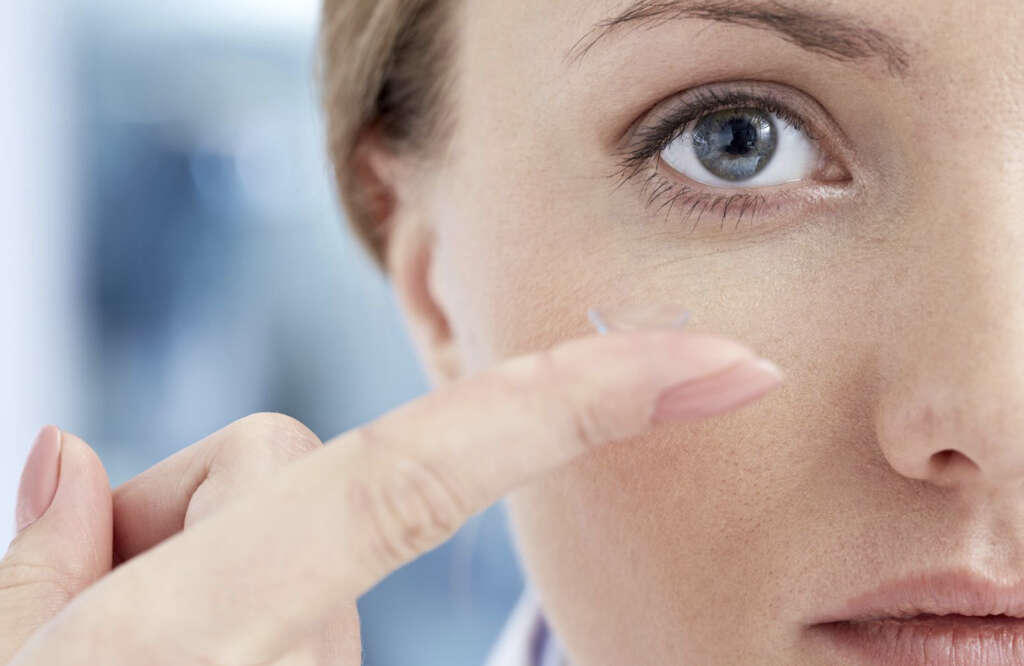
6. Sexually Transmitted Disease
There are several types of STDs that can cause bacterial or viral conjunctivitis. Often, this results from the bacteria that causes the STD being transferred to the eye from physical contact, e.g. touching the infected area and then rubbing the eyes.
Gonorrhea, chlamydia, and herpes are all types of diseases that cause pink eye. In pregnant women with these diseases, the disease can be transferred to the fetus causing neonatal conjunctivitis in the newborn baby. This can potentially lead to vision loss or severe scarring of the eye’s surface if not treated promptly.

7. Animal Allergy
Pink eye is a common symptom people with animal allergies experience, which can often be relieved with over the counter allergy medications or eye drops. The irritation will likely subside after the individual is no longer exposed to the animal causing the allergy. People are often allergic to specific types of animals.
Animal allergies are often caused by exposure to pet dander but may also be from the animal’s saliva. If dead skin flakes or fluids from the animal gets into the individual’s eye, eye inflammation is likely to occur in addition to other allergy symptoms.

8. Foreign Object
If any foreign object, such as an eyelash or debris from outside, gets into a person’s eye, irritation of the eye can occur leading to pink eye. The object does not need to be allergy-inducing to cause this effect. The discomfort will not subside until the debris is successfully removed.
Often, foreign objects get stuck under the eye’s upper eyelid. Flushing out the affected eye with water can help dislodge the object and clear the eye. Rubbing the eyes can make the irritation worse. It may be beneficial to apply antibiotic eyedrops as a precautionary measure.

9. Blocked Tear Duct
In babies, a common cause of pink eye is a blocked tear duct as the duct is not fully developed at the time of birth. It can take a couple of weeks or even months for the duct to fully develop, which would resolve the problem. This issue occurs in about 20% of babies.2Miles, K. (n.d.). Blocked tear ducts in babies. Retrieved November 18, 2020, from https://www.babycenter.com/0_blocked-tear-ducts-in-babies_10403185.bc While not as common, adults can sometimes get blocked tear ducts due to a nose injury or age-related changes to the structure of the nose.
While this issue often resolves itself with time, the child’s pediatrician may recommend several treatments to help soothe the discomfort and prevent complications. These can include massaging the tear ducts, wiping the eye with sterile water, or applying antibiotic eye drops.

10. Pollen Allergy
Similar to animal allergies, people with pollen allergies may get pink eye when exposed to pollen, especially during the springtime in many locations. Some regions may pollen released as early as January. If possible, avoiding too much time outdoors during these seasons can help keep minimize symptoms.
Eye drops developed for daily use and allergy symptoms can help reduce itchiness and redness of the eye. Also, over-the-counter allergy medicines can help provide temporary relief, and immunotherapy can help in the long-term.4Pollen allergy: Types, treatments, and home remedies. (n.d.). Retrieved November 18, 2020, from https://www.medicalnewstoday.com/articles/322256 While this treatment can take several years to provide significant relief, this method essentially alters the body’s immune response to allergens.



